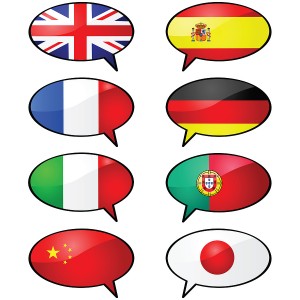-
Popular Posts
- Who Is Craig and What’s His List?
- How to Find Free Shipping E-tailers
- 5 Top Sites for Last Minute Travel Deals
- How Do Boomers and Seniors Use the Internet?
- Should You Join Facebook Now?
- Six Tips for Taking the Social Networking Plunge
- Better Bookmarking with Delicious
- Five Reasons You Can’t Afford to Dismiss Facebook and Other Social Networks
- Patient Websites Provide Bridge to Family and Friends
- About Us
Categories
site sponsors
Google Translate: Can Computers Replace Human Translators?
 Allison, the daughter of my friends Kathy and Jeff, was spending a month in Costa Rica. She wrote a daily blog post about her experience. The problem was that she wrote the posts in Spanish. Since her parents weren’t fluent in Spanish, they used Google Translate to convert her posts to English.
Allison, the daughter of my friends Kathy and Jeff, was spending a month in Costa Rica. She wrote a daily blog post about her experience. The problem was that she wrote the posts in Spanish. Since her parents weren’t fluent in Spanish, they used Google Translate to convert her posts to English.
Kathy’s assessment: “I loved it. It was not perfect, and the idioms were the biggest problem. But most of the time we were able to figure out what was going on.”
How Does Google Translate Work?
Machine translations using word-for-word conversions or rule-based automated systems result in poor translations. It takes a human being to get the nuance of idioms and to match the tone and style of the prose. But Google has advanced the art of machine translation. Instead of applying “rules,” it uses what it calls Statistical Machine Translation.
Google feeds hundreds of millions of translated documents, such as U.N. reports, into its computer. By detecting patterns in documents translated by humans, Google Translate makes intelligent guesses as to what an appropriate translation should be. Google offers translations in more than 50 languages. It does best with major European languages because it is able to input a vast amount of translated documents.
How Did Google Translate Do?
To get an idea of how good a job Google Translate does, I used it to translate a recent post into French. How to Clean Out Your Email Inbox in Under 5 Minutes–and Why You Should became Comment Nettoyer Votre Boîte de Réception en Moins de 5 Minutes-et Pourquoi Vous Devriez.
I asked two people fluent in both languages how Google did. Christine is a native French speaker, and Sherrie is a native English speaker. They agreed that a French reader would get the essence, but the translation was pretty literal, and there were numerous grammar and usage errors. Christine provided this example:
- English: The new ones just piled up atop the old ones.
- French: The new ones simply amassed on the summit of the ancient ones.
Christine noted that a native French speaker would identify problems with the text immediately. Would they read the text for the information or dismiss it because of the errors?
I have some personal experience with the meaning getting lost in translation. I took a copy of a Japanese edition of my romance novel to a sushi bar. The chef blushed as he translated the Japanese title to English. The prosaic “Fixing to Stay” had become “In the Space of a Passion Filled Night.” The human translator had obviously taken poetic license.
How Do You Use Google Translate?
Google Translate is easy, quick, and free. You can translate any text or an entire web page. Here’s how to do it.
- Go to Google Translate.
- Select the original language and the language you want from the drop down menus.
- Copy and paste text into the text box. You can also upload a file from your computer or enter a URL to translate web content.
- Press Enter to see the translation. Click the audio icon to listen to the translation.
Learn More
- Watch a video explaining how Google Translate works.
- Read the Christian Science Monitor article Technology that Translates and Unites about machine translation.